Introduction to Photography: The Universal Language
As I sit down to share my journey through the lens, a myriad of images flashes before my eyes – the rich tapestry of human experience I have been privileged to capture. Photography, a universal language, speaks to us in hues, contrasts, and compositions, telling stories that transcend the barriers of speech and geography. It is an art form that, in its essence, is about preserving moments that otherwise would slip away unnoticed.
In this extensive article, I intend to walk you through the captivating world of photography – not as a distant observer, but as an active participant who has been deeply entrenched in its allure. My aim is not only to educate beginners but also to offer insights that might refine the skills of the avid enthusiast.
Photography is a complex medium, offering a breadth of possibilities as vast as the universe itself. My own journey has led me from the picturesque landscapes of New Zealand, where I founded Stony Studios, to the awe-inspiring expanses of the cosmos through astrophotography. I’ve had the honor of photographing government functions in the elusive corners of North Korea and capturing the serene beauty of a wedding day. Each photograph is a story, a study of light and life.
In the following sections, we’ll delve into what photography truly is, the historical milestones that shaped it, and the pioneers who paved the way. We’ll explore whether high-end gear is a necessity or a luxury, and discuss the bare minimum equipment needed to embark on your photographic journey. From the fundamental camera settings to a comprehensive FAQ, this article is crafted to be your guide.
Let’s embark on this journey together, as I share not only the knowledge I’ve garnered through my lenses but also the personal insights that only come from years of capturing the world through a camera. This is an invitation to see the world anew, to find beauty in the mundane, and to tell stories that need no words. Welcome to “Introduction to Photography: The Universal Language.”
Section 1: What Is Photography?
At its core, photography is the art and science of capturing light. It is the process by which we use technology to freeze a moment in time, to record as precisely as possible the scenes and subjects before us. But to define photography merely by its technical aspects would be an oversight of its profound capability to evoke emotion, provoke thought, and document existence.
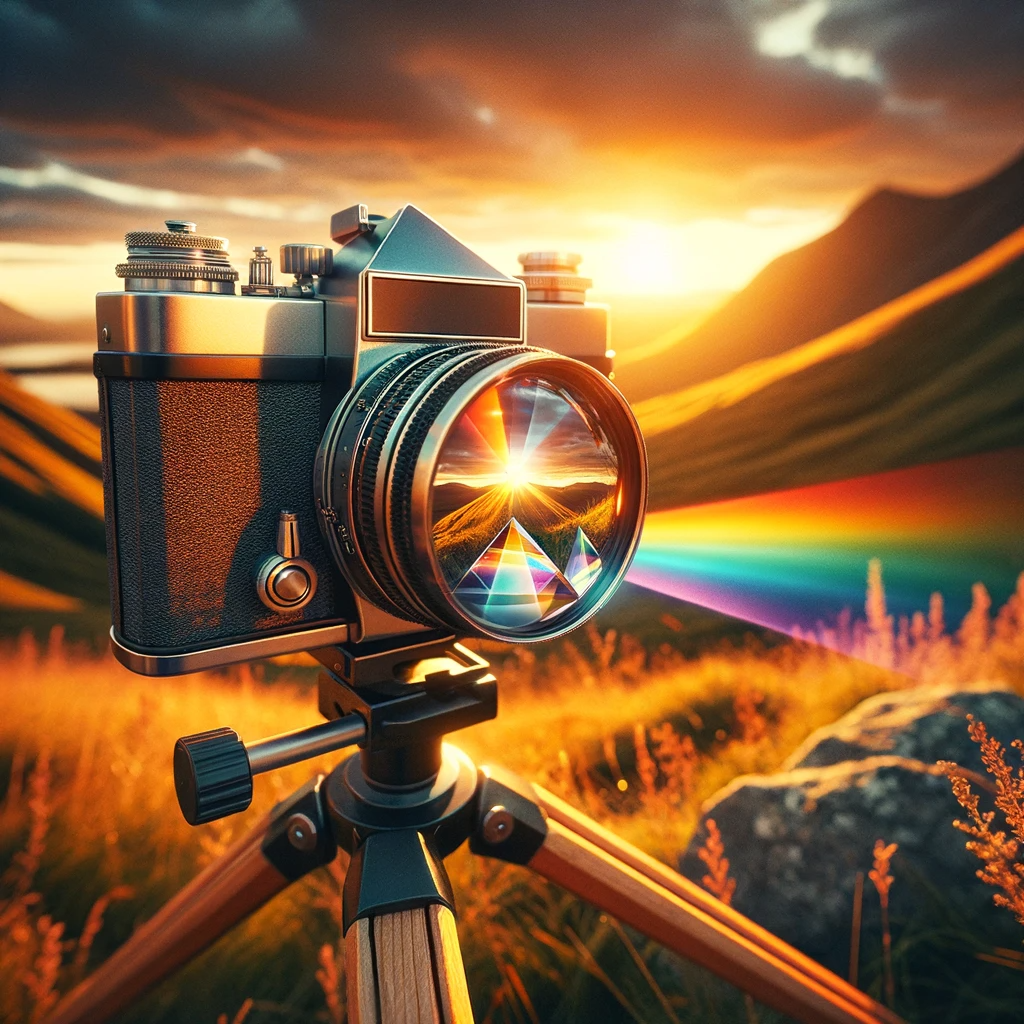
Photography is a universal language, one that does not require translation to be understood across cultures and countries. It is a medium that conveys not just information, but also sentiment and perspective. A photograph can tell a story, preserve history, or even inspire change. Through the lens, photographers have the power to bring attention to the overlooked, to highlight both the magnificence and the plight of our world.
The beauty of photography lies in its diversity. It can be as simple as a snapshot taken on a mobile phone, or as complex as a carefully staged and lit scene captured with high-end equipment. It encompasses various genres, from the candidness of street photography to the calculated precision of architectural photography. Each genre speaks to a different audience and serves a different purpose, yet all fall under the broad umbrella of photography.
Historically, photography has been about the pursuit of capturing reality. However, with the advent of digital photography and post-processing software, the lines between reality and artistry have become blurred. Modern photography can be as much about creation and manipulation as it is about documentation, allowing photographers to express themselves in limitless ways.
Photography also serves as a time capsule. Each photograph, whether taken yesterday or a century ago, is a testament to the moment of its creation. It showcases the fashion, technology, and societal norms of its time. In this way, photography is not just an art form but also an important historical record.
Ultimately, photography is a tool for seeing, for teaching us to notice the light that bathes our everyday lives, the shadows that contour the world around us, and the fleeting expressions that flit across human faces. Whether one is a hobbyist capturing memories, an artist expressing a vision, or a journalist telling the unvarnished truth, photography is about connection—connecting us to the world, to each other, and to moments we wish to hold onto forever.
Section 2: A Brief History of Photography and Its Pioneers
The chronicle of photography is a fascinating saga that commences with the basic scientific understanding of light and its capture. It dates back to the early experiments of the 1800s when innovators first found methods to fix an image permanently.
The inception of photography is often credited to Frenchman Joseph Nicéphore Niépce, who, in 1826 or 1827, produced the earliest surviving photograph of a real-world scene using a camera obscura and a pewter plate coated in bitumen. This process, which required an exceedingly long exposure time, was called heliography. Niépce’s quest for capturing the transient play of light and shadow led to his collaboration with Louis Daguerre, which after Niépce’s death, culminated in the creation of the daguerreotype in 1839. The daguerreotype was the first publicly announced photographic process and it spread rapidly around the world, capturing everything from landscapes to portraits.
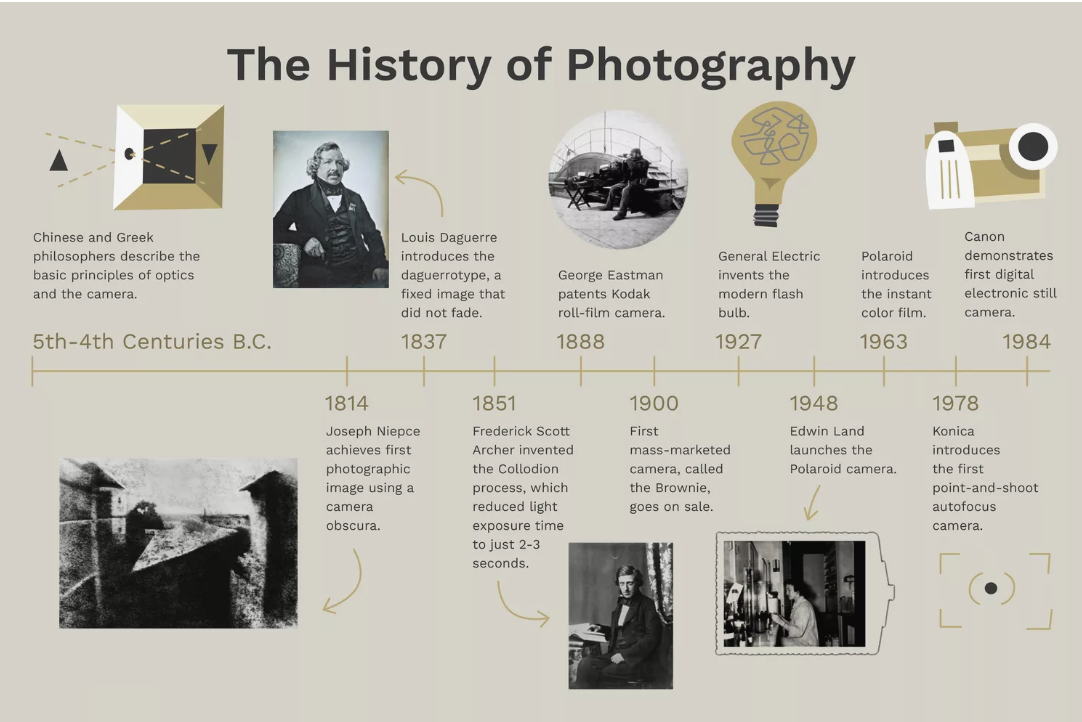
Across the English Channel, Henry Fox Talbot was experimenting with paper negatives, leading to the calotype process in 1841. This technique allowed for multiple prints from a single negative, which was a significant advancement over the one-off daguerreotype images. Meanwhile, in the United States, Samuel Morse, better known for his contribution to the telegraph, was one of the first to experiment with the daguerreotype, spreading its use and teaching the technique to others.
The latter half of the 19th century saw a plethora of improvements that made photography more practical and accessible. The wet plate collodion process, developed by Frederick Scott Archer, drastically reduced exposure times and enabled photographs to be made available to the masses. George Eastman revolutionized photography by introducing flexible roll film and the Kodak camera in the late 1880s, with the slogan “You press the button, we do the rest,” which brought photography to the casual consumer.
As the 20th century dawned, the art and science of photography were well established. Pioneers like Ansel Adams and Edward Weston would take photography as an art form to new heights, pushing the boundaries of the medium with their innovative techniques and artistic perspectives. Adams, with his breathtaking landscapes, showcased the grandeur of the American West, while Weston turned to the human form and everyday objects, capturing them with an unprecedented level of detail and tonality.
Color photography, initially a complex and unreliable process, became more widespread by the mid-20th century, thanks to the development of Kodachrome film. This innovation allowed photographers to capture the world in vibrant hues, transforming the visual language of photography once again.
The latter part of the 20th century and the dawn of the 21st saw the digital revolution take hold. Digital cameras democratized photography even further, allowing instant review of images and a multitude of post-processing options. Today, in an era where billions of images are taken and shared daily, photography is more integral to our lives than ever before.
Photography’s history is not just a tale of technological advancement but a story of the individuals who pushed the medium forward. These pioneers did not just develop new methods to capture images; they changed the way we see the world. They taught us that a photograph could be a document, a work of art, a means of communication, or a tool for social change. The history of photography is, at its heart, the history of human curiosity and creativity.
Section 3: Do You Need a Fancy Camera?
The question of whether a fancy camera is necessary to take great photographs is an enduring one, often asked by aspiring photographers. The answer, however, is nuanced and depends on one’s objectives, skill level, and the nature of the photography one intends to pursue.
To begin with, it is important to recognize that the camera is merely a tool. Like a painter’s brush, it is the skill and vision of the photographer that are most crucial to the creation of an impactful image. Great photography has been consistently produced with a range of equipment, from simple pinhole cameras to high-end digital SLRs.
For those starting out, the key is to understand the basics of composition, lighting, and perspective. A simple camera that allows you to manipulate the exposure triangle—aperture, shutter speed, and ISO—can serve as a solid foundation for learning. Many professional photographers agree that constraints can often enhance creativity, as they force one to think more deeply about how to frame and capture a subject.
However, certain types of photography do benefit from specialized equipment. For instance, wildlife photographers often need lenses with long focal lengths to capture distant subjects, while sports photographers require cameras with fast autofocus and the ability to shoot at high frames per second. Similarly, for those delving into professional realms, clients may have expectations regarding the quality and detail of images that only higher-end cameras can provide.
Yet, with advances in technology, even smartphones are now capable of producing remarkable images, challenging the notion that expensive gear is a prerequisite for quality. The proliferation of photo editing apps also allows photographers to tweak and enhance their images right from their phones, which was once the sole domain of more sophisticated camera systems.
In the digital age, the discussion has also shifted towards the end-use of photographs. For images that will primarily be viewed on digital platforms, the high resolution offered by fancy cameras may not be necessary. Conversely, if the goal is to produce large prints or detailed commercial work, the higher resolution and greater control offered by such cameras can be beneficial.
Ultimately, while a fancy camera can offer more features, greater flexibility, and higher image quality, it is not a requirement for capturing great photographs. What is imperative is the photographer’s ability to see and interpret the world, to understand light and shadow, and to convey emotion and narrative through the lens. A fancy camera can be a wonderful asset, but it is the photographer who makes a picture, not the camera.
Section 4: The Bare Minimum Gear Needed for Photography
Embarking on the journey of photography need not be an expedition weighed down with excessive gear. The bare minimum required to begin can be quite modest, emphasizing learning and creativity over equipment. For those at the starting line of their photographic adventure, here’s what you fundamentally need.
Firstly, a camera is, quite obviously, essential. This could be a digital SLR, a mirrorless camera, or even a smartphone with a capable camera. What matters is that the device offers some degree of manual control over exposure settings such as shutter speed, aperture, and ISO. This control is what allows you to make creative decisions rather than leaving everything to automated presets.
Next, a lens is necessary, and for those using interchangeable lens cameras, a standard kit lens, often a mid-range zoom like an 18-55mm, is a good starting point. It provides a range of focal lengths for various styles of photography, from wide-angle landscapes to more zoomed-in portraits. A fixed 50mm lens (often referred to as a ‘nifty fifty’) is another affordable and versatile option, renowned for its ability to produce sharp images and beautiful background blur (bokeh).
A reliable means of stabilizing the camera is also beneficial, especially in low light situations or when learning long exposure photography. A simple, sturdy tripod can make a significant difference in the sharpness and quality of your images.
While not absolutely necessary, an additional battery and memory card can save you from missing shots due to power loss or storage capacity. Photography can often involve long days, and having backups ensures that you are prepared for extended shoots.
Understanding light is crucial in photography, so a basic understanding of how to manipulate and work with natural light is indispensable. However, should you find yourself frequently shooting indoors or in poor lighting conditions, an external flash or some simple reflectors can greatly enhance your ability to control lighting.
Post-processing is the final step where you can correct or enhance your images. Software like Adobe Lightroom or free alternatives like GIMP can be incredibly useful. Learning to post-process can be as important as learning to shoot, as it gives you control over the final image.
The key takeaway should be that gear does not make the photographer. The essentials listed here are just that—essential. They form the foundation upon which you can build as your skills and interests develop. Over time, you may choose to invest in more specialized equipment, but remember that the best camera at any given moment is the one you have with you. The most important gear, in truth, is patience, practice, and passion for the craft.
Section 5: The Three Fundamental Camera Settings You Should Know
Understanding the three pillars of photography — shutter speed, aperture, and ISO — is critical for any photographer aiming to take control of their creative vision. Together, these settings form the exposure triangle, each element influencing not just the brightness of the image but also its artistic qualities.
Shutter Speed: Shutter speed refers to the length of time the camera’s shutter is open, exposing light onto the camera sensor. Measured in seconds or fractions of a second, it dictates how motion is captured. A fast shutter speed (e.g., 1/1000) will freeze motion, while a slow shutter speed (e.g., 1 second) can blur movement, useful for creating a sense of motion.
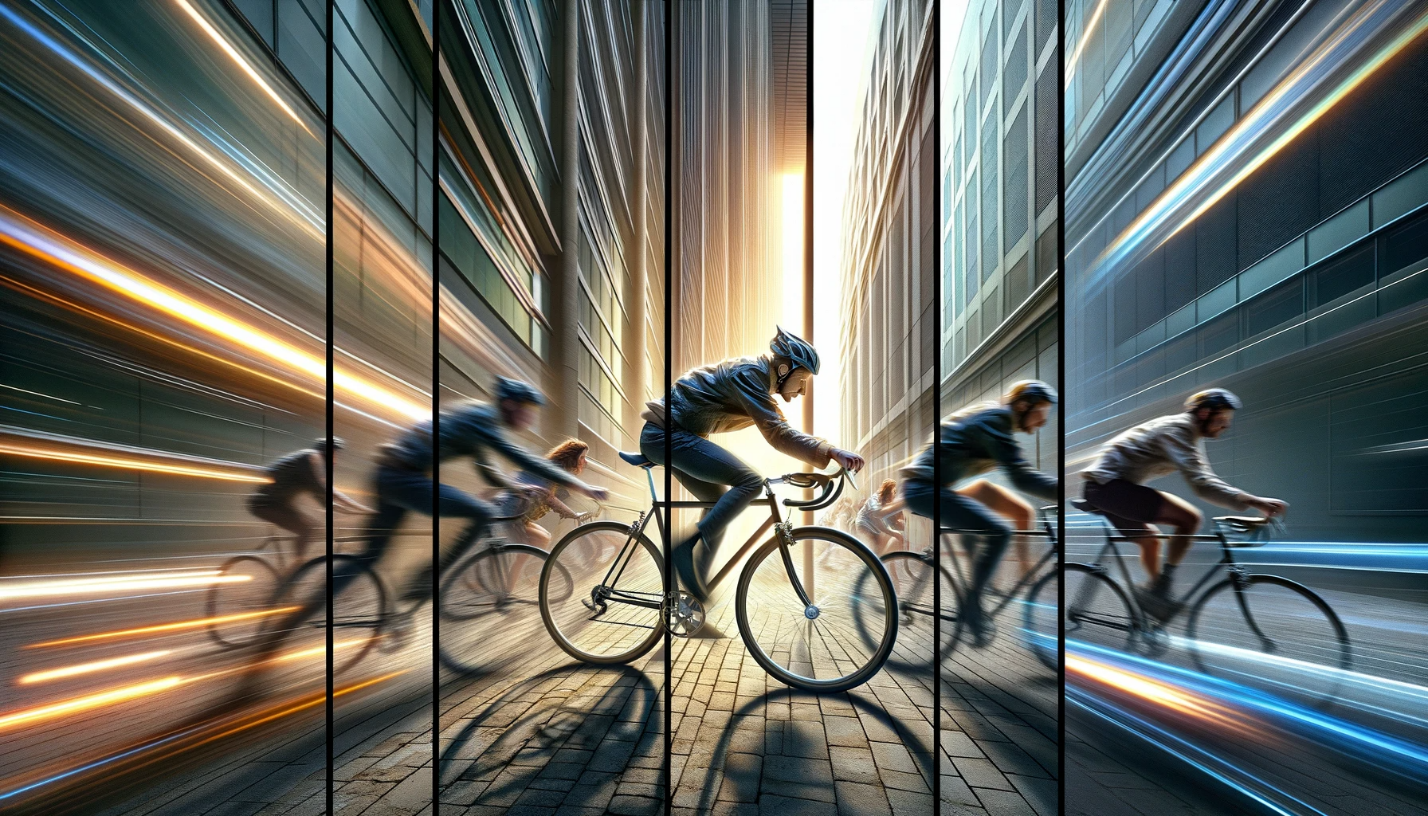
Aperture: Aperture is the opening in the lens through which light passes. It’s quantified in f-stops (e.g., f/2.8, f/8). A lower f-stop number means a larger aperture, allowing more light to enter, which decreases depth of field, resulting in a blurred background — ideal for portraits. A higher f-stop number reduces the aperture size, lets in less light, and increases the depth of field, keeping more of the image in focus, which is excellent for landscapes.
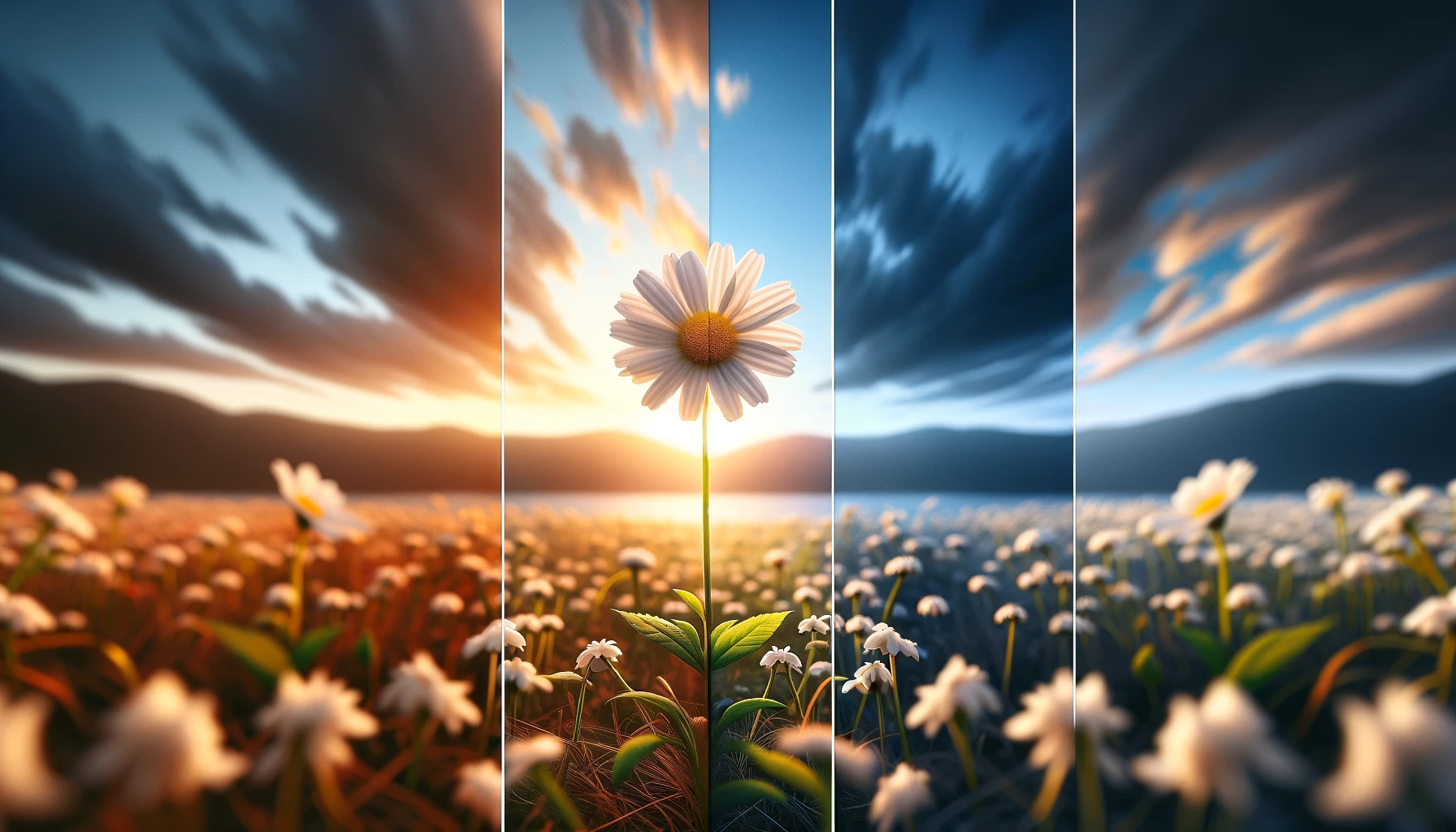
ISO: ISO measures the sensitivity of the camera’s sensor to light. A lower ISO (e.g., 100) means less sensitivity, which is preferable in bright conditions to ensure the image is not overexposed. A higher ISO (e.g., 3200) increases sensitivity and is used in lower light situations but can introduce noise or grain into the image.
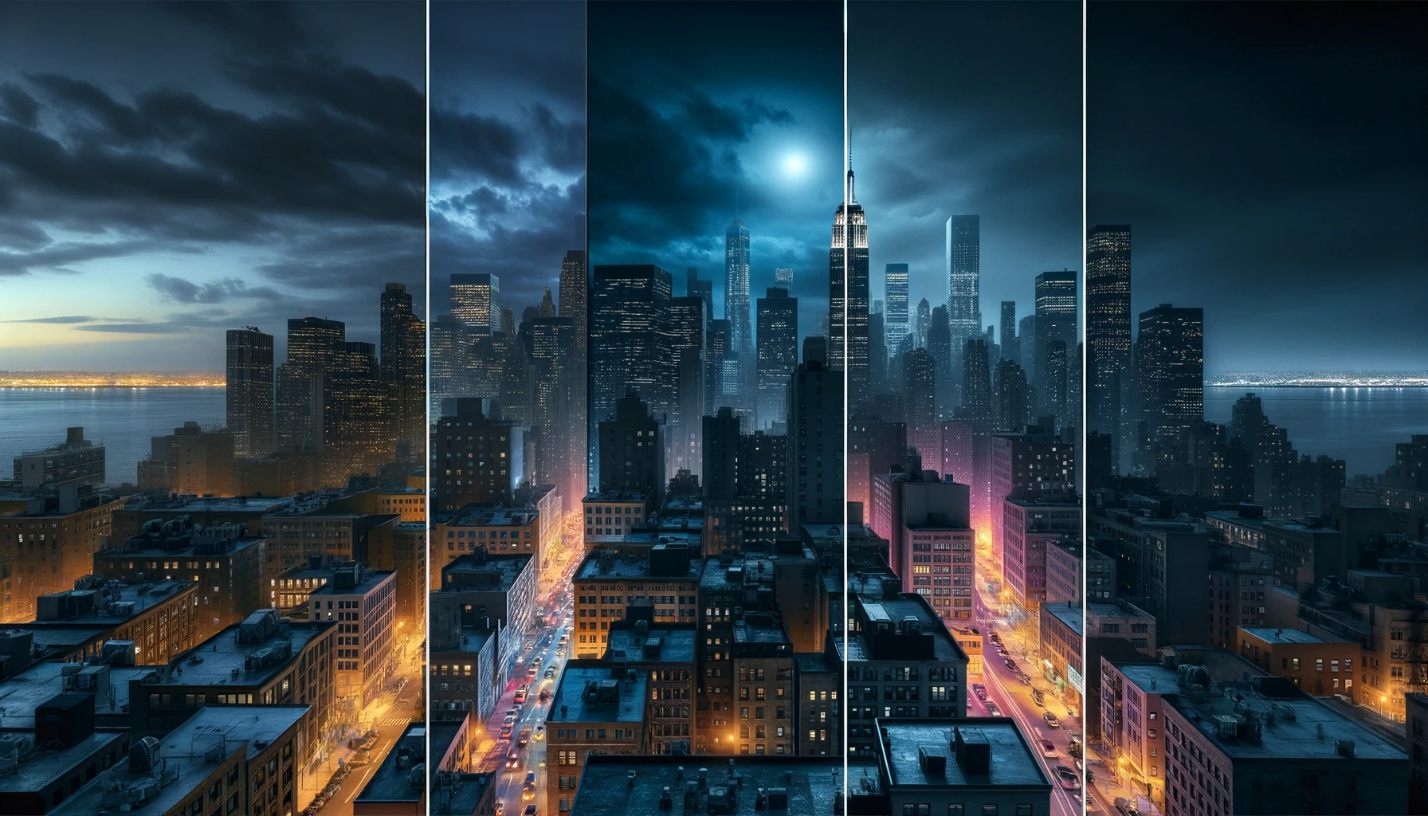
- Shutter speed affects motion.
- Aperture affects depth of field and the amount of light.
- ISO affects the sensor’s sensitivity to light and the image’s graininess.
Each side of the triangle must be balanced; if you adjust one setting, you may need to adjust the others to maintain proper exposure.
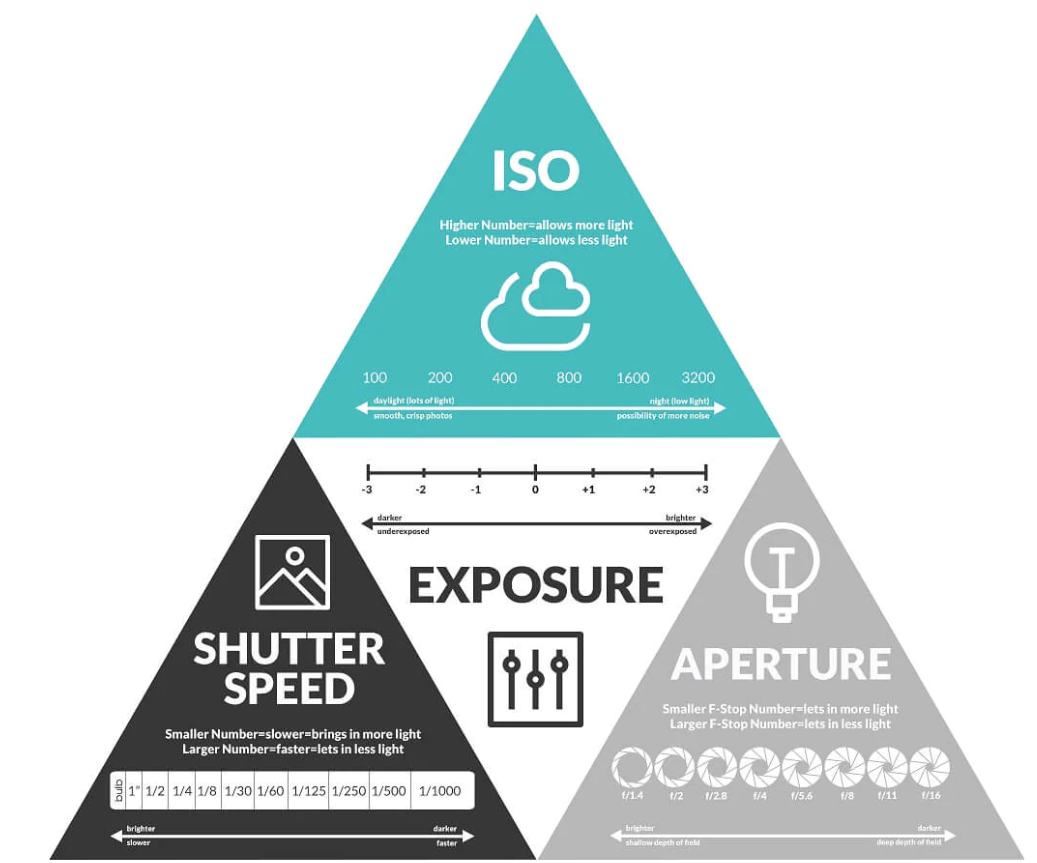
Step-by-step: How to Adjust These Settings on a Typical Camera:
- Switch to Manual Mode: To gain full control, switch your camera from automatic to manual mode. This is typically done by turning the mode dial to ‘M’.
- Adjusting Shutter Speed: Find the shutter speed dial or button on your camera. Turn it to change the duration the shutter remains open. Use a fast speed to freeze action or a slow speed to blur motion.
- Setting the Aperture: Locate the aperture control, often a dial or in the menu system. Rotate it or change the settings to select your desired f-stop. Choose a lower number for a shallow depth of field and a higher number for a greater depth of field.
- Setting the ISO: Access the ISO setting through a dedicated button or the camera menu. Select a value based on the lighting conditions and desired image quality. Remember, higher ISOs can lead to increased noise.
By learning to balance these three fundamental camera settings, you gain the creative freedom to dictate how your images look and feel. Experimenting with different combinations will not only enhance your understanding of exposure but also unlock endless artistic possibilities.
Section 6: Photography FAQ
Photography, as an art and science, often generates a myriad of questions from enthusiasts and professionals alike. Here’s a list of frequently asked questions with concise answers to help shed light on common curiosities.
Q: How do I choose the right camera for me? A: Assess your needs based on the type of photography you’re interested in, your level of experience, and your budget. Research and compare different models and consider renting before purchasing.
Q: Can I take professional photos with a smartphone? A: Yes, modern smartphones are equipped with advanced camera technology that can produce high-quality images suitable for professional use, especially with good lighting and composition.
Q: What is the rule of thirds in photography? A: The rule of thirds is a compositional guideline that suggests dividing the image into thirds, both horizontally and vertically, and placing the subject or important elements along these lines or at their intersections.
Q: When should I use a flash? A: Use a flash when the available light is too dim, causing slow shutter speeds that could lead to motion blur, or to fill in shadows when the light source is behind the subject.
Q: What is RAW format, and should I use it? A: RAW is a file format that captures all image data recorded by the sensor when you take a photo. It’s recommended when you want the highest quality and plan to post-process, as it allows more control over the final image.
Did You Know?

- The oldest surviving photograph is “View from the Window at Le Gras” by Joseph Nicéphore Niépce, taken in 1826 or 1827.
- The first selfie is attributed to Robert Cornelius in 1839, who took a photo of himself standing in the yard behind his family’s lamp store.
Tips for Learning Photography and Resources To enhance your photography skills, consider the following tips and resources:
- Practice Regularly: The more you shoot, the better you’ll understand your camera and how to use different settings creatively.
- Learn from Others: Join photography groups, attend workshops, and follow photographers on social media for inspiration and tips.
- Study Your Environment: Good photographers are observant. Study light, patterns, and moments around you.
- Critique Your Work: Review your photos critically to understand what works and what doesn’t.
- Experiment: Don’t be afraid to try new techniques, styles, or post-processing methods.
Resources:
- Online Tutorials: Platforms like YouTube offer countless tutorials on every aspect of photography.
- Photography Books: Books by renowned photographers can provide insights into both the technical and artistic sides of photography.
- Software Tutorials: To get the most out of post-processing, utilize tutorials for software like Lightroom or Photoshop.
- Community Colleges and Local Workshops: These can offer affordable classes and hands-on experience.
With these FAQs, trivia, and learning resources, you’re equipped to dive deeper into the world of photography, whether as a hobby or a professional pursuit. Remember, the journey of photography is one of continuous learning and discovery.
Section 7: The First Steps on Your Photographic Journey
Embarking on your photographic journey is an exhilarating venture that marries technical skill with creative vision. The camera is your instrument, and the world is your concert hall, with unlimited opportunities for expression and discovery. It’s essential to grasp the technicalities — shutter speed, aperture, ISO — but it’s your creative vision that will breathe life into those technicalities and transform them into art.
Photography is a dance between the eye and the heart. It’s about seeing the potential for a photograph in every situation, understanding how the light falls, and then capturing the mood and emotion that the scene evokes. It’s about looking at the world from a fresh perspective, finding beauty and stories where they are often overlooked.
Let these words from some of the most influential photographers light your path:
- “Your first 10,000 photographs are your worst.” — Henri Cartier-Bresson
- “The best camera is the one that’s with you.” — Chase Jarvis
- “There are always two people in every picture: the photographer and the viewer.” — Ansel Adams
- “To me, photography is an art of observation. It’s about finding something interesting in an ordinary place…” — Elliott Erwitt
These quotes underscore the idea that the journey of photography is one of persistence, mindfulness, and perpetual learning. They remind us that every shot is a building block in the construction of your photographic eye and voice.
As you stand at the threshold of this path, the most important step is to start. Begin by taking photos regularly, experimenting with different subjects and settings. Don’t be discouraged by the learning curve; every image you capture is a lesson that hones your skills and refines your vision.
Your unique style — that signature in your images which makes them distinctly yours — will emerge as you learn and grow. It’s a blend of your personal experiences, your artistic influences, and the way you see the world.
So, pick up your camera, and start shooting. Capture anything that piques your interest, and do so often. Remember, every great photographer once stood where you stand now, camera in hand, filled with curiosity and passion. Your journey in photography is yours to shape, and the world is waiting to see it through your eyes. Step out, explore, capture, and create. Your photographic journey begins now.
Conclusion
In this journey through the essence and craft of photography, we’ve explored its definition as a universal language that captures moments and conveys stories through the interplay of light and shadows. We’ve traced the historical arc of photography from its conception to the present day, recognizing the pioneering spirits that paved the way. We’ve addressed the common query about the necessity of high-end equipment, emphasizing that creativity often thrives within constraints and that the photographer’s vision is paramount.
We’ve outlined the bare minimum gear needed to start taking photographs, showing that entry into the world of photography can be both accessible and uncomplicated. We’ve unpacked the exposure triangle — shutter speed, aperture, and ISO — the three fundamental camera settings that are the backbone of a photographer’s technical knowledge. We’ve also provided a curated FAQ, offering quick insights into common questions, and shared inspirational quotes from renowned photographers to fuel the creative fire.
Photography is more than a hobby or a profession; it’s a potent medium that documents the human experience, celebrates life’s intricacies, and bears witness to the world’s beauty and complexity. It can transcend barriers, evoke empathy, and connect us across continents and cultures.
To beginners embarking on this path: let curiosity be your compass and passion your guide. The skills will come with practice, the technical knowledge with study, but the true essence of photography — the ability to see and to feel — resides within you. Every photograph you take reflects how you interpret the world, an individual stamp that no one else can replicate.
So, take your camera, and step into the vast, vibrant world of photography. Explore, experiment, and express. Let each click of the shutter be a step on your never-ending path of learning and wonder. Remember, every great photographer was once a beginner, armed with nothing but a camera and a vision. Your perspective is unique; share it with the world. Your photographic journey is just beginning, and the possibilities are as boundless as your imagination.
About Me
My name is David Maiolo, and I am a seasoned professional with a rich tapestry of experiences spanning various domains. My journey in photography, a profession I embraced with passion and vigor from 2012 to 2015, saw me founding and leading Stony Studios in the scenic heartland of New Zealand. There, I honed my craft, capturing the diverse tapestry of life from the bustling streets of Asia to the tranquil vistas of the Pacific.
In the current chapter of my career, I stand at the intersection of technology and creativity, steering my own AI and IT consulting firm, DBGM Consulting, Inc., out of the pulsing metropolis of New York City. My academic journey culminated in 2023 when I graduated from Harvard University with a master’s degree, specializing in AI and Machine Learning. This field of study not only expanded my technical acumen but also offered me a unique perspective on the evolving landscape of art and photography in the age of AI.
Previously, at Microsoft, I embraced the role of a Senior Solutions Architect, which allowed me to weave my expertise through the fabric of cloud computing solutions across the globe. My career has been punctuated by diverse roles that include a rock-climbing instructor, pianist, and auto-mechanic, each enriching my narrative and skill set.
Astrophotography has been a natural progression in my photographic odyssey, a discipline where I capture the celestial bodies using professional-grade telescopes and Canon cameras, marrying my love for the cosmos with the art of photography.
During my active years with Stony Studios, my lens captured an array of events from the political landscapes of North Korea to the intimate celebrations of love at weddings. My travel itinerary spanned continents, taking me from the cobblestone alleys of Europe to the ice-bound frontiers of Antarctica, and everywhere in between. Equipped with an arsenal of professional Canon equipment, my commitment to capturing each moment in its truest form was uncompromising.
My photographic works found their place in prestigious publications such as The Atlantic and The Washington Post, narrating stories through imagery to audiences worldwide. The rhythm of my travels often found me hopping from one city to another, across states and countries within a span of a week, each location presenting a new narrative to document.
As I embrace the future, I am fascinated by how AI has reshaped our understanding and creation of art. Tools like DALL-E and Midjourney represent a new frontier, blending the algorithmic precision of machine learning with the nuanced expression of human creativity. These tools offer a glimpse into a future where the boundaries of art are pushed to new horizons, and where my background in photography and AI converge to explore uncharted realms of possibility.
In this digital renaissance, my aim is to meld the insights from my Harvard education in AI with my rich photographic experience, exploring how artificial intelligence can augment human creativity. As photography and art take on new forms in the AI domain, I stand ready to venture into these emerging landscapes, wielding both the camera and the algorithm as instruments of creation.
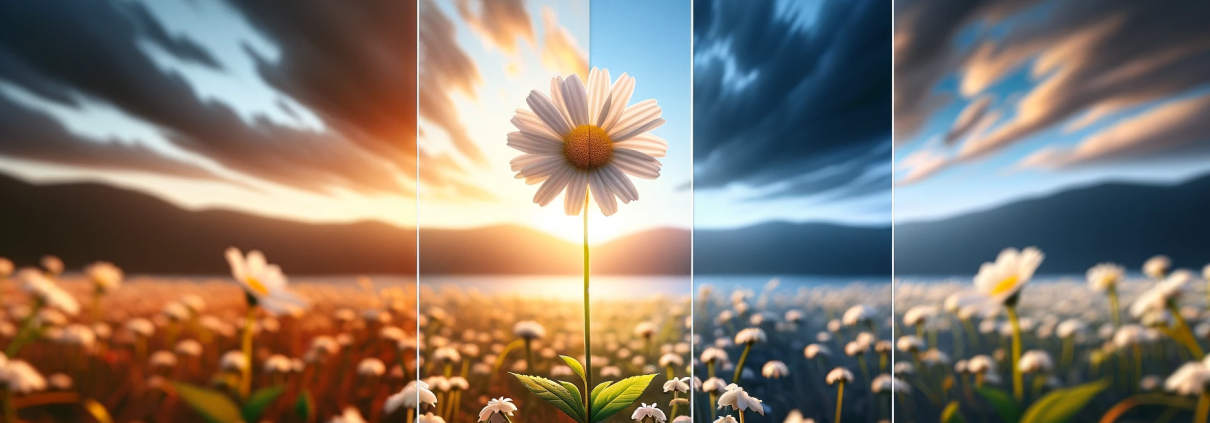


Leave a Reply
Want to join the discussion?Feel free to contribute!